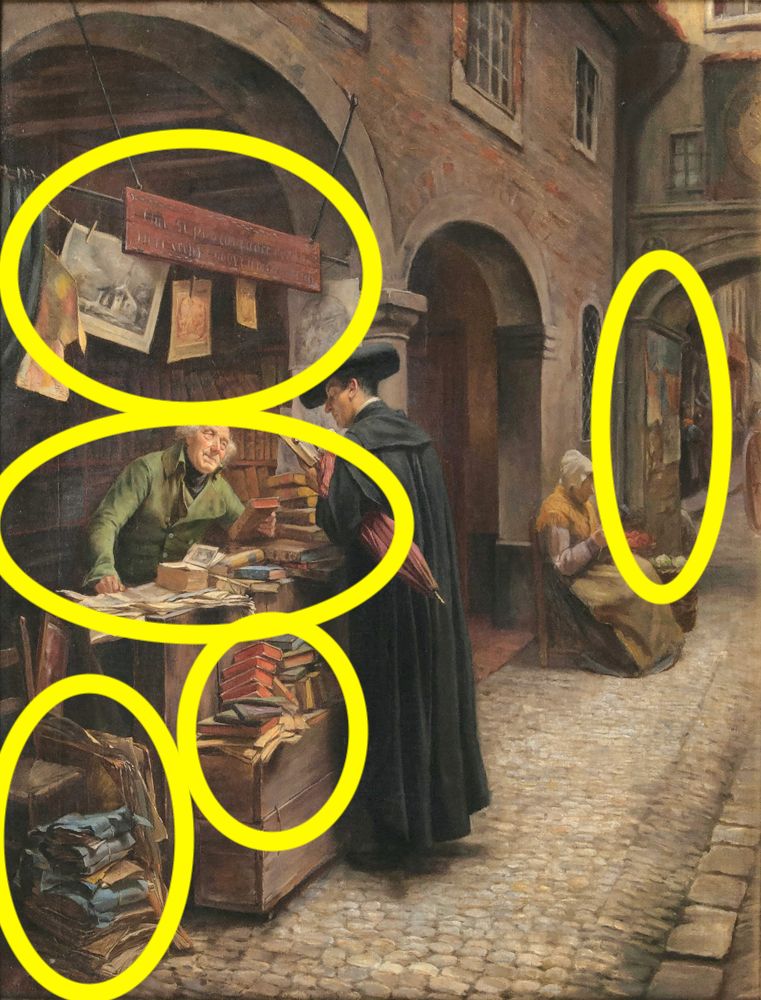
It is paper time, again.
The painting is from A. M. Wirth made in the late nineteenth century, and is on offer at the moment: auktionshaus-stahl.de/de/artikel/999…
What do we see, and what is worth focusing on? A short thread for #bookhistory and #paperhistory alike.
1/x

The painting is from A. M. Wirth made in the late nineteenth century, and is on offer at the moment: auktionshaus-stahl.de/de/artikel/999…
What do we see, and what is worth focusing on? A short thread for #bookhistory and #paperhistory alike.
1/x


To start with, what is imagined in the painting is a streetselling scene in a nineteenth century urban context. The painting is called "Beim Antiquar", and so we are looking at a second hand trade of an antiquarian. The nineteenth century saw the rise of this trade.
2/x
2/x

But first focus on the far right of the painting, almost hidden at the walls: this is glued paper. Likely announcements, advertisements, single-sheet prints, broadsheets and broadsides. Paper being present in urban settings.
3/x
3/x

But what exactly are old books, second hand books, or used books? This is a tricky question. What antiquarians sold was a variety of paper products.
Eyecatchers were helpful to attract a buying audience: copperplate prints and maps - sometimes cut out of older books.
4/x
Eyecatchers were helpful to attract a buying audience: copperplate prints and maps - sometimes cut out of older books.
4/x

This is a traditional insight into such a trade: leather and paper bound books, non-sellers or slow-sellers of other "regular" book shops near and far, waiting to be bought. Big ones, small ones. Waiting material. Old papers.
5/x
5/x

Also on offer were loose sheets, maybe old letters of contemporary authors, sometimes a printed image of a book that was lost, even new papers for letter writing. A paper business, sheet for sheet.
6/x
6/x

And here it becomes interesting. More paper, unbound small books, cheap prints, chap books, littérature populaire, we have many names for these publications.
And there is a portfolio for drawings or loose papers (big and expensive printed images).
7/x

And there is a portfolio for drawings or loose papers (big and expensive printed images).
7/x


And this paper arrangement needs special attention. What is waiting here at the street for potential buyers? And here I need you help and suggestions, #bookhistory experts.
Are these old archival documents (in typical blue dust sheets of nineteenth century)? Or ...
8/x
Are these old archival documents (in typical blue dust sheets of nineteenth century)? Or ...
8/x

... do we see unbound books, never been assembled by a book binder, and hold together by a protecting blue carton? It could be both, maybe is both, but who can help solving this? Thank you for your support.
9/9
9/9

@threadreaderapp unroll
• • •
Missing some Tweet in this thread? You can try to
force a refresh

























